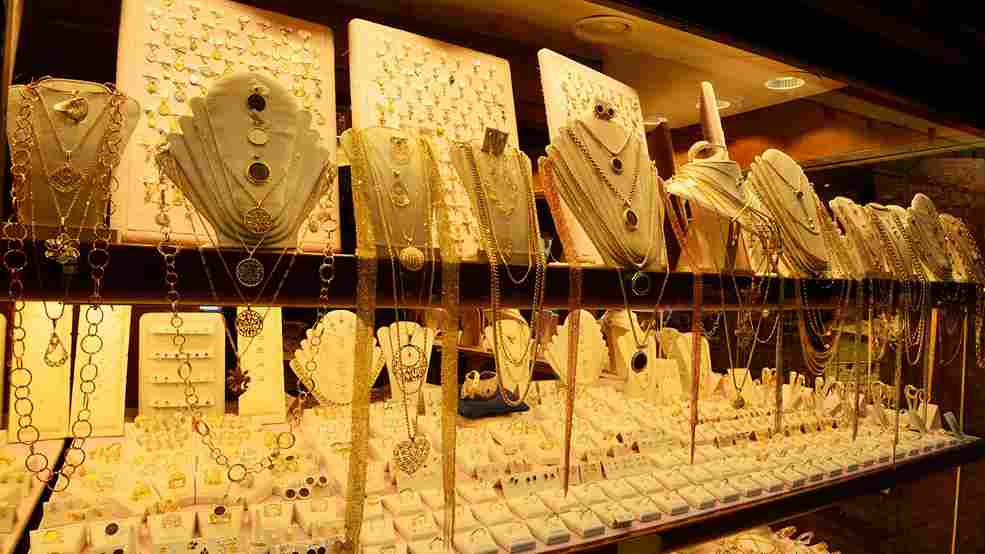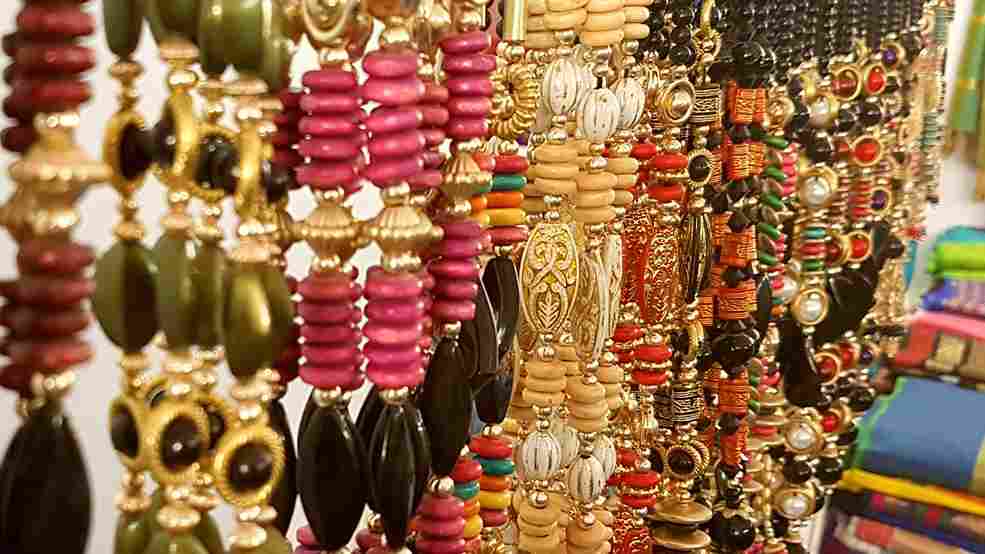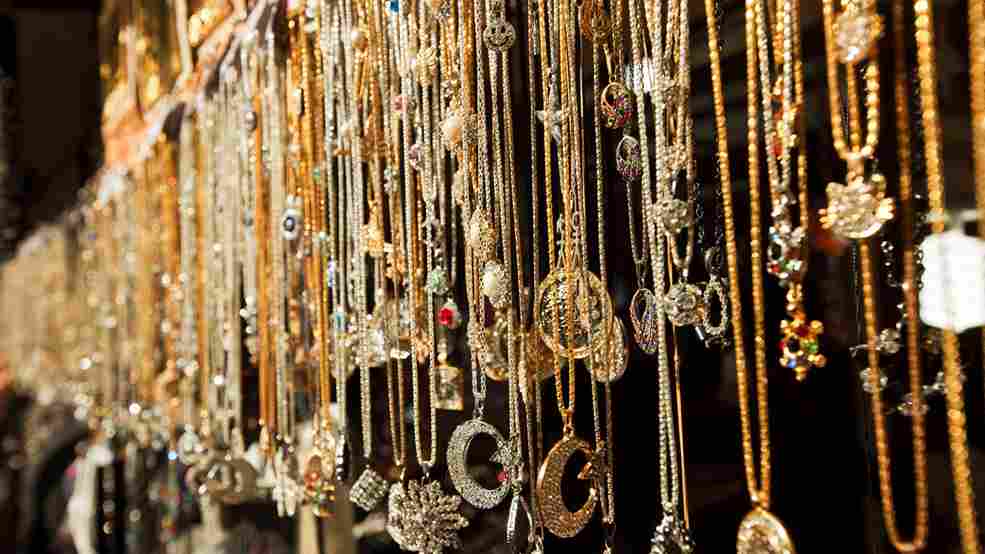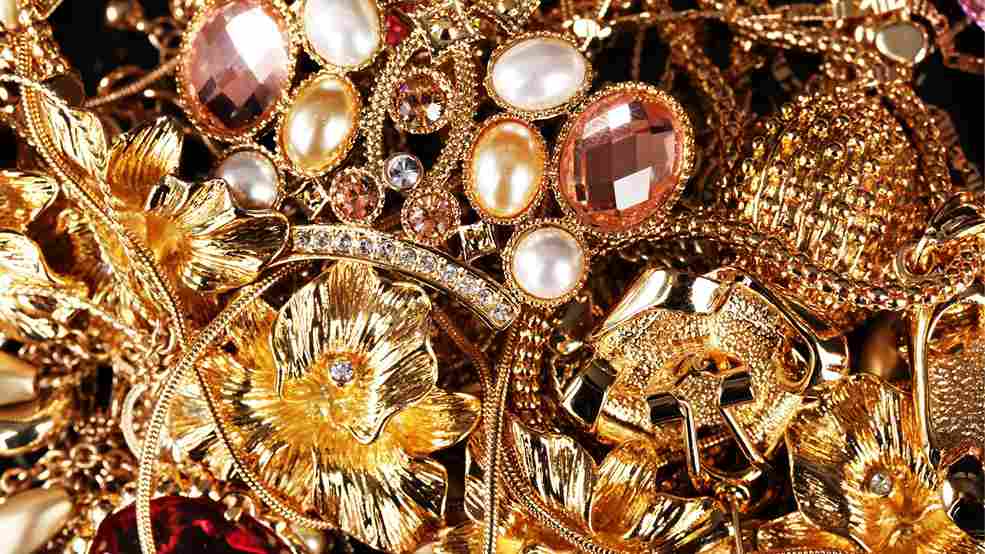Antique Jewelry
Antique jewelry is a term that refers to jewelry that is at least 100 years old, although some experts consider antique jewelry to be at least 50 years old. Antique jewelry has a rich history that spans thousands of years, dating back to ancient civilizations such as Egypt, Greece, and Rome. These ancient pieces were often made using materials like gold, silver, and precious stones, and were used to symbolize wealth, status, and power. In more recent times, antique jewelry has continued to evolve and has been influenced by a variety of styles and trends. From the delicate and intricate pieces of the Middle Ages and Renaissance, to the bold and modern designs of the 20th century, antique jewelry is a testament to the enduring beauty and craftsmanship of the past.
Definition of antique jewelry
Antique jewelry is defined as any piece of jewelry that is at least 100 years old. This includes items such as rings, necklaces, bracelets, earrings, and brooches that were made during a specific time period and have since become collectible due to their age and historical significance. Some experts consider antique jewelry to be any piece that is at least 50 years old, as long as it is in good condition and has not been significantly altered or repaired.Antique jewelry is often made from materials like gold, silver, and precious stones, and is often handcrafted using traditional techniques that have been passed down through generations. It is valued for its historical and cultural significance, as well as its rarity and beauty. Many antique jewelry pieces are considered works of art and are highly sought after by collectors and enthusiasts.In addition to being valuable and collectible, antique jewelry is also a way to connect with the past and appreciate the craftsmanship and artistry of previous generations. It is a way to own a piece of history and to honor the traditions and cultural heritage of the people who made it.

Brief history of antique jewelry
Antique jewelry has a long and rich history that dates back thousands of years. Some of the earliest examples of antique jewelry were found in ancient civilizations such as Egypt, where people would adorn themselves with gold and precious stones as a symbol of wealth and power. Ancient Greek and Roman jewelry was also highly prized and often featured intricate designs and symbols that represented different gods and goddesses.During the Middle Ages and Renaissance, antique jewelry became more delicate and intricate, with a focus on craftsmanship and the use of precious materials like gold and diamonds. The Baroque period, which lasted from the early 17th to the mid-18th century, saw the emergence of more ornate and lavish jewelry styles, with a emphasis on grandeur and opulence.In the 19th and 20th centuries, antique jewelry was influenced by a variety of styles and trends, including Art Nouveau, Art Deco, and mid-century modern. These styles often featured bold, geometric designs and the use of new materials such as platinum and synthetic gemstones.Today, antique jewelry is highly sought after by collectors and enthusiasts, who appreciate the historical significance and craftsmanship of these timeless pieces.
Ancient Times
In ancient times, antique jewelry played an important role in many civilizations as a symbol of wealth, power, and status. Some of the earliest examples of antique jewelry were found in ancient Egypt, where people would adorn themselves with gold, silver, and precious stones as a sign of prosperity and to show their connection to the gods. Ancient Egyptian jewelry was often intricately designed and featured symbols and motifs that represented different deities and beliefs.Ancient Greek and Roman jewelry was also highly prized, with a focus on craftsmanship and the use of precious materials like gold, silver, and gemstones. These civilizations were known for their skilled artisans, who created intricate and ornate pieces that were often inspired by myths and legends.In addition to being worn for personal adornment, antique jewelry from ancient times was also used for ceremonial and religious purposes. For example, ancient Greek and Roman brides would often wear gold crowns on their wedding day, and in ancient Egypt, people would bury their loved ones with jewelry to ensure a comfortable journey in the afterlife.Antique jewelry from ancient times is highly valued for its historical and cultural significance, as well as its beauty and craftsmanship. It is a way to connect with the past and to appreciate the traditions and artistry of previous civilizations.
Examples of antique jewelry from ancient civilizations (Egypt, Greece, Rome, etc.)
There are many examples of antique jewelry from ancient civilizations such as Egypt, Greece, and Rome. Some of the most iconic and well-known pieces include:
- Ancient Egyptian: Ancient Egyptian jewelry was often made from gold and precious stones, and featured intricate designs and symbols that represented different deities and beliefs. Some examples of ancient Egyptian antique jewelry include the famous Mask of Tutankhamun, which was made from gold and adorned with precious gems, and the beautiful necklaces and bracelets that were often worn by the wealthy and powerful.
- Ancient Greek: Ancient Greek jewelry was known for its craftsmanship and use of precious materials like gold, silver, and gemstones. It was often inspired by myths and legends, and featured intricate designs and symbols that represented different gods and goddesses. Some examples of ancient Greek antique jewelry include the delicate gold wreaths and crowns that were worn by brides, and the ornate rings and pendants that were popular among the wealthy.
- Ancient Rome: Ancient Roman jewelry was highly prized for its craftsmanship and the use of precious materials like gold, silver, and gemstones. It was often inspired by Greek and Etruscan designs, and featured intricate and ornate patterns. Some examples of ancient Roman antique jewelry include the stunning gold and pearl earrings that were popular among the wealthy, and the intricate gold filigree work that was used to create beautiful brooches and pendants.
These are just a few examples of the many beautiful and iconic pieces of antique jewelry that have been created by ancient civilizations. Each piece is a testament to the skill and artistry of the people who made it, and is a way to connect with the past and appreciate the traditions and cultural heritage of these civilizations.
Techniques and materials used to create antique jewelry in ancient times
In ancient times, antique jewelry was created using a variety of techniques and materials. Some of the most common techniques and materials used to create antique jewelry in ancient civilizations such as Egypt, Greece, and Rome include:
- Gold: Gold was a popular material for antique jewelry in ancient times due to its beauty, rarity, and durability. It was often used to create intricate and ornate pieces, and was often combined with other materials like precious stones and pearls. In ancient Egypt, gold was considered to be a symbol of the gods and was often used to create beautiful necklaces, bracelets, and other pieces of jewelry.
- Silver: Silver was another popular material for antique jewelry in ancient times, and was often used to create delicate and intricate pieces. In ancient Greece and Rome, silver was often used to create beautiful rings and pendants, and was sometimes combined with gold to create more lavish and ornate pieces.
- Precious stones: Precious stones such as diamonds, emeralds, rubies, and sapphires were highly prized for their beauty and rarity, and were often used to create antique jewelry in ancient times. These stones were often set in gold or silver settings and were used to create stunning rings, pendants, and other pieces of jewelry.
- Other materials: In addition to gold, silver, and precious stones, antique jewelry in ancient times was also made from a variety of other materials such as bronze, copper, and bone. These materials were often used to create more affordable pieces of jewelry that were still beautiful and meaningful.
Ancient artisans used a variety of techniques to create antique jewelry, including casting, hammering, and soldering. They were skilled craftsmen who were able to create beautiful and intricate pieces of jewelry using these techniques and materials.
Middle Ages and Renaissance
During the Middle Ages and Renaissance, antique jewelry was highly prized and often featured delicate and intricate designs. The Middle Ages, which lasted from the 5th to the 15th century, saw the emergence of more sophisticated jewelry styles, with a focus on craftsmanship and the use of precious materials like gold, silver, and gemstones. The Renaissance, which took place from the 14th to the 17th century, saw a revival of classical styles and an emphasis on artistry and beauty.Antique jewelry from the Middle Ages and Renaissance often featured elaborate and ornate designs, with a focus on symbolism and meaning. In the Middle Ages, for example, antique jewelry was often used to symbolize social status and wealth, and was often adorned with precious stones and intricate engravings. During the Renaissance, antique jewelry was often inspired by classical themes and motifs, and featured more delicate and intricate designs.In addition to being worn for personal adornment, antique jewelry from the Middle Ages and Renaissance was also used for ceremonial and religious purposes. For example, rings and pendants were often given as gifts to mark important occasions, and were often inscribed with meaningful symbols and messages.Antique jewelry from the Middle Ages and Renaissance is highly valued for its beauty and craftsmanship, and is a way to connect with the rich history and cultural heritage of these periods.

Examples of antique jewelry from the Middle Ages and Renaissance
There are many examples of antique jewelry from the Middle Ages and Renaissance, each with its own unique style and significance. Some of the most iconic and well-known pieces include:
- Middle Ages: During the Middle Ages, antique jewelry was often used to symbolize social status and wealth, and was often adorned with precious stones and intricate engravings. Some examples of antique jewelry from this period include elaborate gold and silver rings and pendants, and beautiful brooches and necklaces that were often adorned with pearls and other precious stones.
- Renaissance: The Renaissance saw a revival of classical styles and an emphasis on artistry and beauty, and this is reflected in the antique jewelry of this period. Examples of antique jewelry from the Renaissance include delicate gold and silver filigree work, intricate enameled pieces, and stunning gem-encrusted rings and pendants.
These are just a few examples of the many beautiful and iconic pieces of antique jewelry that have been created during the Middle Ages and Renaissance. Each piece is a testament to the skill and artistry of the people who made it, and is a way to connect with the rich history and cultural heritage of these periods.
Techniques and materials used to create antique jewelry in this period
During the Middle Ages and Renaissance, antique jewelry was created using a variety of techniques and materials. Some of the most common techniques and materials used to create antique jewelry during this period include:
- Gold: Gold was a popular material for antique jewelry during the Middle Ages and Renaissance, and was often used to create intricate and ornate pieces. Goldsmiths during this period were skilled craftsmen who were able to create beautiful and delicate pieces using techniques such as casting, hammering, and soldering.
- Silver: Silver was also a popular material for antique jewelry during the Middle Ages and Renaissance, and was often used to create delicate and intricate pieces. Silver was often combined with other materials such as gold and precious stones to create more lavish and ornate pieces.
- Precious stones: Precious stones such as diamonds, emeralds, rubies, and sapphires were highly prized for their beauty and rarity, and were often used to create antique jewelry during the Middle Ages and Renaissance. These stones were often set in gold or silver settings and were used to create stunning rings, pendants, and other pieces of jewelry.
- Other materials: In addition to gold, silver, and precious stones, antique jewelry during the Middle Ages and Renaissance was also made from a variety of other materials such as bronze, copper, and enamel. These materials were often used to create more affordable pieces of jewelry that were still beautiful and meaningful.
Antique jewelry from the Middle Ages and Renaissance is highly valued for its beauty and craftsmanship, and is a way to connect with the rich history and cultural heritage of these periods.
Modern Antique Jewelry
Modern antique jewelry refers to pieces that are at least 100 years old and are considered to be collectible due to their age, rarity, and historical significance. Modern antique jewelry encompasses a wide range of styles and trends, and can include everything from delicate and intricate Victorian-era pieces, to bold and modern Art Deco designs.Modern antique jewelry is often made from materials like gold, silver, and precious stones, and may be handcrafted using traditional techniques that have been passed down through generations. It is valued for its historical and cultural significance, as well as its rarity and beauty. Many modern antique jewelry pieces are considered works of art and are highly sought after by collectors and enthusiasts.In addition to being valuable and collectible, modern antique jewelry is also a way to connect with the past and appreciate the craftsmanship and artistry of previous generations. It is a way to own a piece of history and to honor the traditions and cultural heritage of the people who made it.

Definition of modern antique jewelry
Modern antique jewelry refers to pieces that are at least 100 years old and are considered to be collectible due to their age, rarity, and historical significance. It is called “modern” antique jewelry to distinguish it from antique jewelry from ancient civilizations, which is generally considered to be more than 2,000 years old.Modern antique jewelry encompasses a wide range of styles and trends, and can include everything from delicate and intricate Victorian-era pieces, to bold and modern Art Deco designs. It is made from materials like gold, silver, and precious stones, and may be handcrafted using traditional techniques that have been passed down through generations.Modern antique jewelry is valued for its historical and cultural significance, as well as its rarity and beauty. Many modern antique jewelry pieces are considered works of art and are highly sought after by collectors and enthusiasts. They are a way to own a piece of history and to appreciate the craftsmanship and artistry of previous generations.
Examples of modern antique jewelry
There are many examples of modern antique jewelry, with a wide range of styles and trends to choose from. Some examples of modern antique jewelry include:
- Victorian: The Victorian era, which lasted from 1837 to 1901, was known for its delicate and intricate jewelry styles, with a focus on romance and sentimentality. Examples of Victorian antique jewelry include beautiful lace-like gold and silver filigree work, and intricate enameled pieces.
- Art Nouveau: Art Nouveau jewelry, which emerged in the late 19th century, was known for its flowing, organic lines and nature-inspired motifs. Examples of Art Nouveau antique jewelry include beautiful pendants and rings that feature intricate designs and the use of colorful enamels and gemstones.
- Art Deco: The Art Deco movement, which emerged in the 1920s, was known for its bold, geometric designs and the use of new materials like platinum and synthetic gemstones. Examples of Art Deco antique jewelry include stunning rings, bracelets, and brooches that feature bold, geometric shapes and the use of colorful gemstones.
- Mid-Century Modern: The mid-century modern movement, which emerged in the 1950s and 1960s, was known for its clean, minimalist designs and the use of new materials like plastic and Lucite. Examples of mid-century modern antique jewelry include simple and elegant rings and pendants made from gold and other precious materials.
These are just a few examples of the many beautiful and iconic pieces of modern antique jewelry that are available. Each piece is a testament to the skill and artistry of the people who made it, and is a way to connect with the rich history and cultural heritage of these periods.Regenerate response
Techniques and materials used to create modern antique jewelry
Modern antique jewelry was created using a variety of techniques and materials, depending on the style and period in which it was made. Some of the most common techniques and materials used to create modern antique jewelry include:
- Gold: Gold was a popular material for modern antique jewelry, and was often used to create intricate and ornate pieces. Goldsmiths during this period were skilled craftsmen who were able to create beautiful and delicate pieces using techniques such as casting, hammering, and soldering.
- Silver: Silver was also a popular material for modern antique jewelry, and was often used to create delicate and intricate pieces. Silver was often combined with other materials such as gold and precious stones to create more lavish and ornate pieces.
- Precious stones: Precious stones such as diamonds, emeralds, rubies, and sapphires were highly prized for their beauty and rarity, and were often used to create modern antique jewelry. These stones were often set in gold or silver settings and were used to create stunning rings, pendants, and other pieces of jewelry.
- Other materials: In addition to gold, silver, and precious stones, modern antique jewelry was also made from a variety of other materials such as bronze, copper, enamel, and new materials like platinum and synthetic gemstones. These materials were often used to create more affordable pieces of jewelry that were still beautiful and meaningful.
Modern antique jewelry is highly valued for its beauty and craftsmanship, and is a way to connect with the rich history and cultural heritage of the periods in which it was made.
Summary of the history and beauty of antique jewelry
Antique jewelry has a long and rich history that dates back thousands of years. It has been created by a variety of civilizations and cultures, and has been influenced by a wide range of styles and trends over the centuries.Antique jewelry is made from materials like gold, silver, and precious stones, and is often handcrafted using traditional techniques that have been passed down through generations. It is valued for its historical and cultural significance, as well as its rarity and beauty. Many antique jewelry pieces are considered works of art and are highly sought after by collectors and enthusiasts.Throughout history, antique jewelry has played an important role in many cultures, serving as a symbol of wealth, power, and status, and as a way to connect with the past and appreciate the traditions and cultural heritage of previous generations. It is a way to own a piece of history and to honor the skill and artistry of the people who created it.
Importance of preserving antique jewelry for future generations
Preserving antique jewelry for future generations is important for a number of reasons. Antique jewelry is a valuable part of our cultural and historical heritage, and represents the artistry and craftsmanship of previous generations. It is a way to connect with the past and to learn about the traditions and cultural practices of different civilizations and cultures.Preserving antique jewelry also helps to ensure that these pieces are available for future generations to appreciate and enjoy. Without proper care and preservation, antique jewelry can become damaged or lost, and this irreplaceable part of our history would be lost forever.There are a number of ways to preserve antique jewelry for future generations, including proper storage, handling, and cleaning. It is important to handle antique jewelry with care, and to store it in a safe and secure location where it will be protected from damage. Antique jewelry should also be cleaned and maintained regularly to ensure that it stays in good condition.By preserving antique jewelry for future generations, we can ensure that these beautiful and valuable pieces of history are available for all to appreciate and enjoy.
If you are interested know about Antique music box Read Here

Leave a Reply